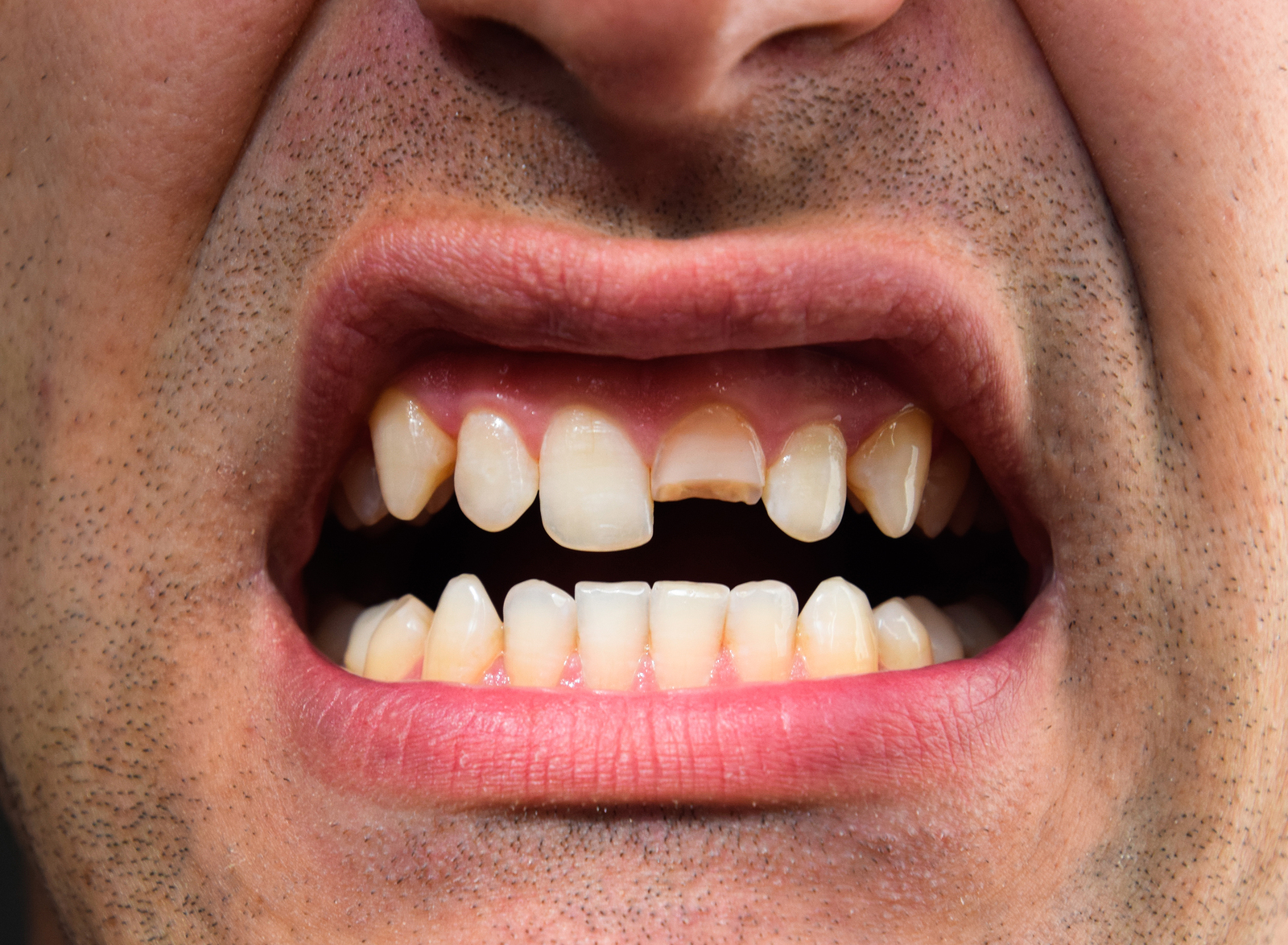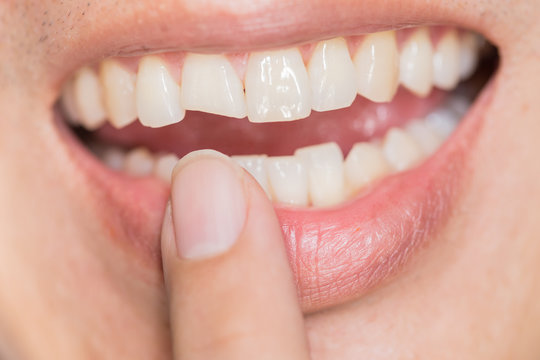My Tooth Broke: What Should I Do Next?
My Tooth Broke: What Should I Do Next?
A broken tooth can be both painful and concerning. Whether it's from biting into something hard, an accident, or weakening over time, knowing what steps to take immediately can save your tooth and prevent further complications. At St. Lucie Dentist, we understand the urgency and are here to guide you through this dental emergency.
Quick Navigation
- Understanding Broken Teeth: Types and Causes
- Immediate Steps After Breaking a Tooth
- Pain Management and First Aid
- Protecting Your Broken Tooth Until Treatment
- When to See a Dentist: Warning Signs
- Treatment Options for Broken Teeth
- Preventive Measures to Avoid Future Breakage
- Long-Term Care for Restored Teeth

Different types of tooth fractures require specific treatments
Understanding Broken Teeth: Types and Causes
Before diving into emergency procedures, it's helpful to understand the different types of tooth breakage you might experience. Each type may require different approaches to treatment:
- Minor chips – Small pieces of enamel that break off the tooth surface
- Cracked tooth – A crack that runs from the chewing surface towards the root but hasn’t separated the tooth into pieces
- Split tooth – A tooth that has split into two distinct segments
- Broken cusp – Damage to the pointed chewing surface of the tooth
- Serious breaks – Breaks that expose the nerve, causing significant pain and sensitivity
Common causes of broken teeth include:
- Biting down on hard foods like ice, hard candy, or unpopped popcorn kernels
- Impact or trauma during sports or accidents
- Grinding or clenching teeth (bruxism)
- Large old fillings that don’t support the remaining tooth structure
- Decay that has weakened the tooth from the inside
- Exposure to extreme temperature variations
At St. Lucie Dentist, we've seen thousands of broken teeth cases, each with its unique circumstances. Understanding what you're dealing with helps determine the urgency and treatment approach needed.
Immediate Steps After Breaking a Tooth
The moments immediately following a tooth break are crucial. Taking the right steps can significantly impact the outcome of your treatment and potentially save your tooth. Here's what you should do:
Emergency Steps for a Broken Tooth
- Rinse your mouth – Gently rinse with warm water to clean the area and remove any loose fragments.
- Recover tooth fragments – If possible, collect any broken pieces and place them in milk or a tooth preservation product.
- Apply pressure to bleeding areas – Use a clean piece of gauze or a tea bag to apply gentle pressure if bleeding occurs.
- Apply a cold compress – Place an ice pack or cold compress on your cheek to reduce swelling and numb the area.
- Contact your dentist immediately – Call St. Lucie Dentist as soon as possible to schedule an emergency appointment.
Remember that time is of the essence when dealing with a broken tooth. The sooner you can get professional care, the better your chances of preserving the tooth and preventing complications.
Pain Management and First Aid
A broken tooth can range from painless to extremely painful, depending on whether the nerve is exposed. While waiting for your dental appointment, these measures can help manage the pain:
- Over-the-counter pain relievers – Take acetaminophen (Tylenol) or ibuprofen (Advil, Motrin) as directed to reduce pain and inflammation.
- Avoid temperature extremes – Stay away from very hot, cold, or sweet foods and beverages that could trigger sensitivity.
- Clove oil – Apply a small amount of clove oil to the affected area using a cotton ball for temporary pain relief.
- Salt water rinses – Gently rinse with warm salt water (1/2 teaspoon of salt in 8 oz of water) to reduce inflammation and keep the area clean.
- Avoid chewing – Try not to chew on the side with the broken tooth.
Pro Tip
While over-the-counter dental cements can temporarily protect the tooth, they're not a substitute for professional dental care. Use them only as directed and still seek prompt dental attention.
Protecting Your Broken Tooth Until Treatment
The period between breaking your tooth and seeing your dentist is critical. Here's how to protect your tooth during this waiting period:
- Cover sharp edges – If the broken tooth has sharp edges that could cut your tongue or cheek, cover it with dental wax (available at most pharmacies). If dental wax isn’t available, sugarless gum can work temporarily.
- Maintain gentle oral hygiene – Continue brushing other teeth normally, but be very gentle around the broken tooth.
- Choose soft foods – Stick to a soft diet like yogurt, smoothies, mashed potatoes, and soup.
- Avoid sticky or hard foods – Stay away from caramel, taffy, hard candies, nuts, and similar items that could cause further damage.
- Don’t probe the area – Avoid poking at the broken tooth with your tongue or fingers.
By taking these precautions, you'll minimize the risk of further damage and infection while waiting for professional care at St. Lucie Dentist.
When to See a Dentist: Warning Signs
While all broken teeth should be evaluated by a dentist, some situations require immediate emergency dental care. Seek emergency attention if you experience:
- Severe pain that doesn’t subside with over-the-counter pain relievers
- Excessive bleeding that continues for more than 10 minutes despite applying pressure
- Significant swelling of the gums, face, or neck
- Fever accompanied by tooth pain, which may indicate an infection
- Trouble breathing or swallowing – This could indicate a serious infection that requires immediate medical attention
- Tooth displacement – If the tooth has moved from its normal position in addition to breaking
Emergency Contact Information
For dental emergencies during office hours, call St. Lucie Dentist immediately at (772) XXX-XXXX. For after-hours emergencies, please call our emergency line at (772) XXX-XXXX.
Treatment Options for Broken Teeth
At St. Lucie Dentist, we offer comprehensive treatment options for broken teeth. The appropriate treatment depends on the severity and location of the break. Here's a detailed look at the most common treatment approaches:
Dental Bonding
For minor chips and cracks, dental bonding provides a quick, painless solution. This procedure involves:
- Applying a tooth-colored composite resin to the damaged area
- Shaping and polishing the resin to match surrounding teeth
- Hardening the material with a special light
Bonding typically takes 30-60 minutes per tooth and can last several years with proper care.
Dental Veneers
For front teeth with moderate damage, porcelain veneers offer a beautiful, durable solution. Veneers are thin shells of porcelain custom-crafted to cover the front surface of the tooth. The process involves:
- Removing a small amount of enamel from the tooth surface
- Taking impressions for custom fabrication
- Bonding the veneer to the tooth with special cement
Veneers can last 10-15 years and provide excellent aesthetic results.
Dental Crowns
For more extensive damage, a dental crown (or cap) may be necessary. Crowns fully encase the visible portion of the tooth, restoring its shape, size, strength, and appearance. The crown procedure typically involves:
- Preparing the tooth by removing decay and shaping it
- Taking impressions for custom crown fabrication
- Placing a temporary crown while the permanent one is being made
- Cementing the permanent crown in place
Modern crowns are highly durable and can be made from porcelain, ceramic, metal, or a combination of materials.
Root Canal Therapy
If the break is deep enough to expose the pulp (the center of the tooth containing nerves and blood vessels), root canal therapy may be necessary. This procedure involves:
- Removing the infected or damaged pulp
- Cleaning and disinfecting the inner chambers
- Filling and sealing the space
- Placing a crown to protect the tooth
Modern root canal procedures are relatively comfortable and can save teeth that would otherwise need extraction.
Dental Implants
In cases where the tooth cannot be saved, a dental implant provides the most natural-looking and functioning replacement. The implant process involves:
- Placing a titanium post in the jawbone to replace the root
- Allowing the bone to integrate with the implant (osseointegration)
- Attaching an abutment to the post
- Securing a custom-made crown to the abutment
Implants have a success rate of over 95% and can last a lifetime with proper care.

Treatment options range from simple bonding to comprehensive restoration
Preventive Measures to Avoid Future Breakage
While accidents happen, many tooth fractures are preventable. Incorporate these practices to minimize your risk of breaking teeth in the future:
- Wear a mouthguard during contact sports or activities with fall risks
- Get a night guard if you grind or clench your teeth during sleep
- Avoid using teeth as tools for opening packages or bottles
- Be cautious with hard foods like ice, hard candy, popcorn kernels, and olive pits
- Address decay promptly – Cavities weaken teeth and make them more susceptible to breakage
- Schedule regular dental checkups to catch small cracks or weaknesses before they become larger issues
- Replace old, large fillings with crowns when recommended by your dentist
- Maintain excellent oral hygiene to keep teeth strong and healthy
Did You Know?
Enamel is the hardest substance in the human body, but it can still break under sudden impact or pressure. Regular dental visits help identify weakened areas before they fracture.
Long-Term Care for Restored Teeth
After your broken tooth has been restored, proper maintenance will help ensure the longevity of the repair. Follow these guidelines:
- Practice thorough oral hygiene with regular brushing and flossing
- Use a soft-bristled toothbrush to avoid damaging the restoration
- Be gentle around the restored area during the first few days
- Attend follow-up appointments to ensure the restoration is functioning properly
- Limit staining foods and beverages like coffee, tea, and red wine if you have tooth-colored restorations
- Don’t skip routine dental cleanings – professional cleaning helps maintain both natural teeth and restorations
- Report any issues promptly – such as pain, sensitivity, or loosening of the restoration
At St. Lucie Dentist, we're committed to the long-term success of your dental restorations. We provide comprehensive aftercare instructions specific to your treatment and are always available to answer questions about maintaining your restored smile.
The Emotional Impact of Broken Teeth
Beyond the physical discomfort, a broken tooth can have significant emotional and psychological effects. Many patients report feeling self-conscious about their smile or experiencing anxiety about potential dental procedures.
At St. Lucie Dentist, we understand these concerns and strive to provide compassionate care that addresses both the physical and emotional aspects of dental trauma. Our team takes time to explain procedures, answer questions, and ensure your comfort throughout the treatment process.
Remember that modern dental techniques and materials allow us to restore broken teeth with natural-looking results that can renew your confidence in your smile.
Conclusion: Your Partner in Dental Emergency Care
A broken tooth may be alarming, but with proper immediate care and professional treatment, most broken teeth can be successfully restored. The key is taking quick action and seeking professional dental care as soon as possible.
At St. Lucie Dentist, we're committed to providing prompt, effective care for dental emergencies like broken teeth. Our experienced team uses the latest techniques and technologies to restore your smile's function and appearance.
Remember that even minor chips should be evaluated by a dentist to prevent further damage or complications. By following the steps outlined in this guide and seeking professional care, you can protect your oral health and maintain a beautiful smile for years to come.
Experiencing a Dental Emergency?
Don't wait if you've broken a tooth. Contact St. Lucie Dentist immediately for prompt, compassionate care.
Schedule an Emergency Appointment


